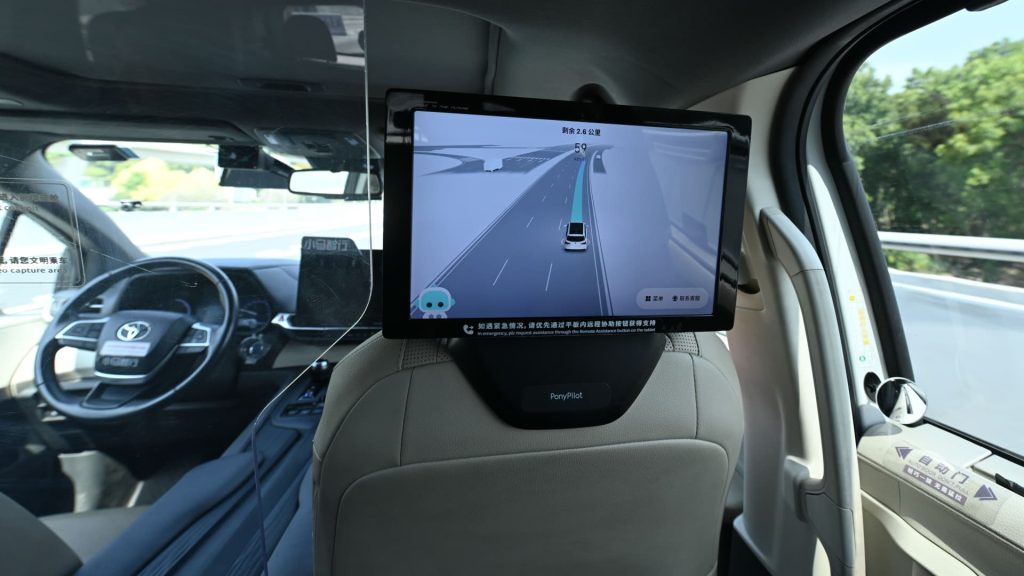After years of testing, robotaxis are starting to become a normal part of transportation in certain parts of the U.S. and China, where a handful of companies are competing to become market leaders. In the U.S., Alphabet’s Waymo has pulled ahead of its rivals and says it has more than 1,500 robotaxis on the road conducting more than 250,000 paid weekly trips in cities including San Francisco, Los Angeles, Phoenix and Austin, Texas. Tesla has just gotten started in Austin . In China, there are proibably about 2,000 robotaxis, primarily operated by a few local companies across the country’s larger cities, according to Barclays estimates published last week. The British bank forecasts at least 300,000 robotaxis will be deployed in China by 2030, accounting for at least 5% of on-demand transportation in larger cities. China’s capital Beijing has allowed robotaxi operators to charge fares for rides in a suburb since late 2021 . Shanghai in late July became the latest region to allow fully autonomous taxis to charge fares in parts of the city . Pony AI unique U.S.-listed Chinese startup Pony AI is so far the only robotaxi operator in the country that can charge the public for fares in parts of all four of China’s largest cities: Beijing, Shanghai, Guangzhou and Shenzhen. The company hasn’t disclosed how many cars it has running, but claims each car receives an average of 15 orders a day. “We believe this milestone [in Shanghai] demonstrates Pony’s technological and operational readiness in [the] robotaxi business,” Bank Of America analysts said in a report last week. “Pony will scale up its Robotaxi fleet size and see improving profitability, given better economies of scale and unit profitability,” the analysts said. Bank of America rates the stock a buy, and gives the American depositary receipts a price target of $21, or more than 60% upside from Friday’s close. Improving safety Pony AI Chief Technology Officer Tiancheng Lou said in a late July interview that his focus now is on improving safety, speeding up the ability to hail a robotaxi and cutting costs. The company has started testing its latest-generation robotaxi vehicles in Beijing, claiming to have slashed the cost of the parts needed to build its autonomous driving kit by 70% . Pony AI is set to report its next quarterly results on Aug. 12. Pony’s U.S.-listed rival WeRide last Thursday said that its robotaxi revenue in the second quarter rose to a a record $6.4 million . Morgan Stanley rates WeRide a buy, but expects shares to “remain event-driven and show more volatility” subject to robotaxi developments in China and overseas. The bank does not cover Pony.ai. “We believe progress in global development of robotaxis will expedite the pace of China’s development/rollout of L4 AD/robotaxis,” the Morgan Stanley analysts said, adding they do not think legacy global automakers and legislators in major economies “will risk missing out on the transition to vehicle autonomy, particularly after losing ground to China on EVs.” Waymo expansion While Waymo has only just begun expanding internationally, entering the Japanese market, Chinese robotaxi operators are already pushing into Europe and the Middle East. WeRide claims it’s the only company with autonomous driving permits in Saudi Arabia, China, the UAE, Singapore, France and the U.S. Outside China, WeRide said it has already started pilot operations in Riyadh with Uber Technologies . In mid-July, Chinese internet tech company Baidu reached a deal to offer its Apollo Go self-driving vehicles on the Uber ride-hailing platform, aiming for the Middle East and Asia later this year. The U.S. and mainland China, where ride-hailing app Didi acquired Uber’s business, are not part of the deal. Apollo Go’s pricing on Uber will likely compare to that of human drivers on Uber, Bank of America analysts said in a separate report last month. “Therefore, we think value in [the] overseas market could be multiple times higher than China, hence its profitability overseas could have much larger room.” Bank of America rated Baidu a buy, with a $100 price target. Baidu is set to report results on Aug. 20. Baidu breakeven Barclays estimates that Baidu is probably already breaking even on its robotaxis in the Chinese city of Wuhan, excluding research and investment costs. Most Chinese robotaxi operators are also close to breaking even, the analysts said. “Being able to design and build cheap robotaxi models is the single largest reason why we think Chinese players are likely to reach [unit economics] breakeven (excluding R & D and other headquarters costs) by the end of 2025,” the Barclays analysts said. The bank estimates each Waymo car currently costs $200,000, Baidu’s Apollo RT6 costs about $37,000, Pony.ai’s newest vehicle runs at about $42,000 and WeRide slightly more. —CNBC’s Michael Bloom contributed to this report.
Robotaxis are becoming a reality. Who’s poised to win in China and beyond
Related Posts
About Us
Our finance blog is your go-to resource for expert financial advice, covering everything from personal budgeting and saving strategies to smart investing and market analysis. Stay updated with the latest trends, tips, and insights to help you make informed decisions and achieve financial success.
Subscribe to Updates
Subscribe to Get the Latest Financial Tips and Insights Delivered to Your Inbox!
About Us
Our finance blog is your go-to resource for expert financial advice, covering everything from personal budgeting and saving strategies to smart investing and market analysis. Stay updated with the latest trends, tips, and insights to help you make informed decisions and achieve financial success.
Subscribe to Updates
Subscribe to Get the Latest Financial Tips and Insights Delivered to Your Inbox!

